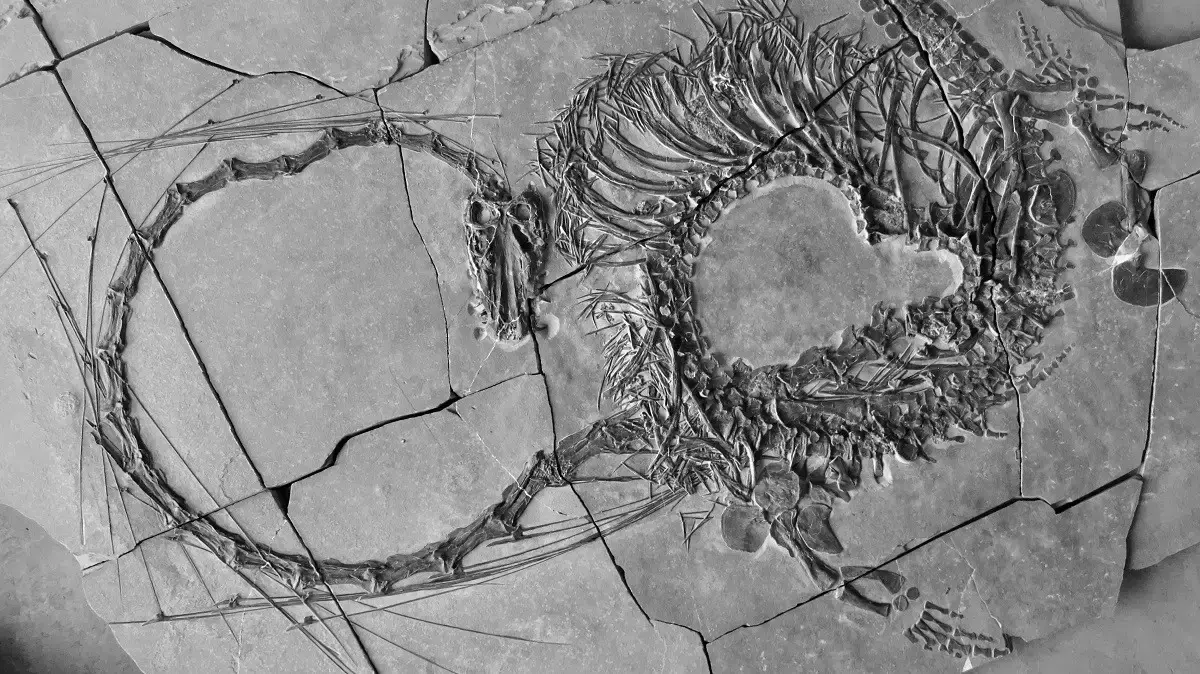The treasure that reveals severe drought at the bottom of the Mississippi River 0:45
(CNN) --
Recently exposed shoals along the drought-stricken Mississippi River have drawn the attention of fossil hunters, leading to two rare finds of a rare species of The ice age.
Wiley Prewitt was exploring a recently exposed area on October 26 when he came across a fairly large tooth sticking out of the sand.
The Oxford, Mississippi, resident would soon learn that it was a fossilized jawbone of a giant American lion, a species that went extinct approximately 11,000 years ago.
“I knew right away just from the shape of the teeth that it was a carnivore fossil, but of course, I didn't know it was an (American) lion.
We all know them, but you never dream you're going to find one,” Prewitt said.
“I just couldn't believe it.
I was playing the fossil lottery."
A rare American lion fossil has been discovered near the Mississippi River.
The tooth, pictured, has a jawbone fragment still attached.
(Credit: George Phillips/Mississippi Museum of Natural Science)
The American lion was the largest extinct cat to live in North America during the last ice age, according to the National Park Service.
Known by its scientific name, Panthera atrox, which means "fearsome panther" in Latin, the species was 25% larger than a living African lion, standing 1.2 meters tall at the shoulders and 1 to 2 meters long. ,4 meters.
American lions weighed between 500 and 800 pounds on average, though some of the largest may have exceeded 1000 pounds, the park service notes.
Three days after Prewitt's find, the Mississippi Fossils and Artifacts Symposium and Exposition hosted an event featuring previously discovered American lion fossils.
Prewitt took the fossil in hopes that experts would identify it, but he didn't know how important his finding would be to understanding a little more about Mississippi's past.
advertising
"When (Prewitt) took out the front part of a lion's jaw, I knew right away what it was," said George Phillips, curator of paleontology at the Mississippi Museum of Natural Sciences, who was at the event.
"Who would have thought in a million years that another lion fossil would turn up, considering they're rare, at an event (at) which the theme was the American lion?"
While the fossil was not a complete jaw, much was left behind to easily identify the specimen, Phillips said: It had a significant gap between the canine and premolars that could only belong to the American lion.
After looking at other fossils of the same species at the event, Phillips said it was easy to narrow down the possibilities of other carnivores and confirm that he was looking at another lion fossil.
The American lion stood 1.2 meters tall at the shoulders and was 1.5 to 2.4 meters long.
A femur of the species is the latest addition to the MMNS collection.
It is depicted alongside other predatory femurs commonly found today.
(Credit: George Phillips/Mississippi Museum of Natural Science)
A week after that startling discovery, a local wildlife official removed a large American lion femur from river sediment, resulting in another fossil of the same rare species being added to the museum's collection, Phillips told CNN. .
Carnivore fossils are much harder to find compared to their prey counterparts, according to Phillips.
Two discoveries of American lion bones in a week or so is incredible, she said, calling it "just an incredibly rare fossil."
A growing collection of American lions
Prewitt plans to donate the fossil he found to the museum in Jackson, which would make it the fourth addition to the institution's collection of American lion bones, counting the addition of the newly found femur.
“The interesting thing about the river is that every year is different.
When the river rises, the high tide exposes different things and covers other things.
So here, you're always looking for new sites,” Prewitt said.
"Fossils really make you look into deep time and I think, to me, that's really part of their magic."
The first fossil of the American lion was a lower jaw, found in Natchez, Mississippi, in 1836. It was identified nearly 20 years later by paleontologist Joseph Leidy.
(Credit: George Phillips/Mississippi Museum of Natural Science)
The first fossil of the American lion was found in Natchez, Mississippi, in 1836, but paleontologist Joseph Leidy did not identify it until nearly 20 years later.
Leidy discovered that the fossil, a lower jaw, belonged to a species never before discovered.
It was larger than the extinct European cave lion, the largest known member of the cat family at the time.
Prior to that, giant lions were unknown to have roamed North America.
“I think people take more pride in an area when they realize there's something like that, some aspect of the age of the area where they live,” Phillips said.
“Archaeologists try to do the same thing, to show that there were people who were here before you.
Well, there are also weird-looking extinct creatures that were here before you."
FossilsMississippi







